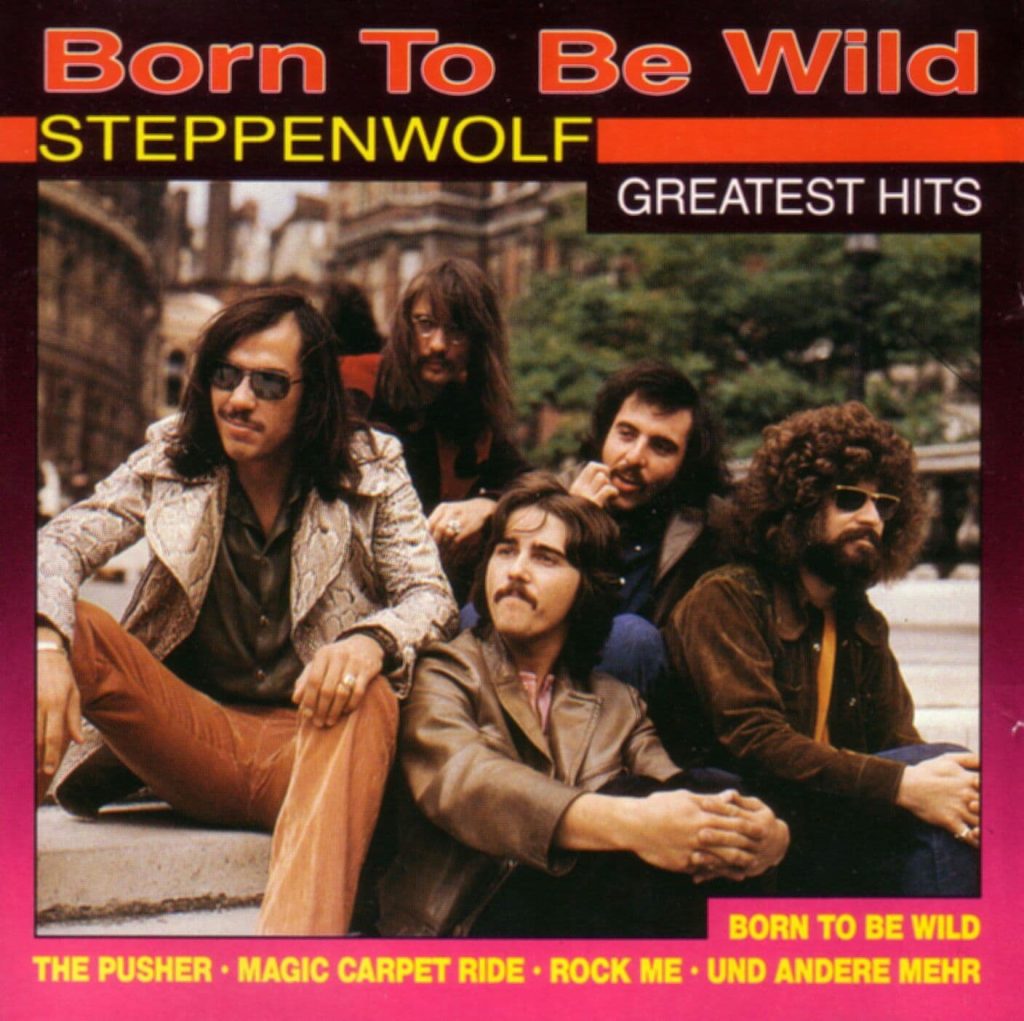
“Born to Be Wild” – Steppenwolf’s Anthem of Rebellion and Freedom
Few songs have captured the essence of freedom, rebellion, and adventure quite like “Born to Be Wild” by Steppenwolf. Released in 1968 as a single from their self-titled debut album, the track quickly became a cultural phenomenon and one of the defining anthems of the counterculture movement. Its infectious energy and rebellious lyrics made it an instant hit, peaking at No. 2 on the Billboard Hot 100 in the United States, and it has since become synonymous with the open road, biker culture, and the spirit of independence.
Written by Mars Bonfire (the pseudonym of Dennis Edmonton, former guitarist for The Sparrows, a precursor to Steppenwolf), the song was initially intended as a ballad but evolved into a high-octane rock number under the band’s direction. The song’s structure—powered by distorted guitar riffs, steady drums, and a driving bassline—helped lay the foundation for what would later be known as hard rock and even heavy metal. In fact, the phrase “heavy metal thunder” in the lyrics is widely recognized as one of the first recorded uses of the term “heavy metal,” making “Born to Be Wild” a cornerstone in the development of the genre.
The song’s lyrics convey a sense of liberation and a yearning for adventure, with lines like “Get your motor runnin’, head out on the highway, looking for adventure, and whatever comes our way.” This call to embrace life without restraint resonated deeply with the youth of the 1960s, who were seeking to break free from societal conventions and explore new ways of living. It wasn’t just a song—it was an attitude, embodying the idea that life is meant to be lived on one’s own terms.
Musically, John Kay’s gritty, commanding vocals gave the song a raw edge, while the band’s tight instrumentation provided the perfect backdrop for its high-energy vibe. The combination of bluesy rock elements with an aggressive delivery created a sound that felt both familiar and revolutionary. The driving tempo, punctuated by electric guitar riffs, gives the track an unstoppable momentum, making it feel like a musical expression of motion itself—perfectly fitting for a song that would become forever associated with motorcycles and the open road.
The cultural impact of “Born to Be Wild” reached new heights when it was featured prominently in the 1969 film Easy Rider, a countercultural classic that follows two bikers on a road trip across America. The song plays during one of the movie’s most iconic sequences, reinforcing its association with freedom and nonconformity. This cinematic placement cemented “Born to Be Wild” as the ultimate biker anthem, and it has since become a staple in motorcycle rallies and road trip playlists around the world.
Though it was released more than five decades ago, the song has never lost its appeal. “Born to Be Wild” continues to inspire new generations of listeners, making appearances in films, commercials, and TV shows. Its rebellious spirit, encapsulated in the song’s lyrics and sound, transcends time, appealing to anyone who has ever felt the need to break free from the constraints of society and chase the thrill of the unknown.
Over the years, the song has garnered numerous accolades. It was included in Rolling Stone’s “500 Greatest Songs of All Time” and inducted into the Grammy Hall of Fame. Its influence extends beyond just rock music; it has been covered by artists across multiple genres, including pop, punk, and country, proving that the message of “Born to Be Wild” resonates universally.
Steppenwolf’s legacy as pioneers of hard rock rests largely on the success of “Born to Be Wild.” Though the band went on to release other successful tracks like “Magic Carpet Ride” and “The Pusher,” it is this song that remains their signature piece. Whether blaring from a jukebox at a bar or roaring through the speakers of a Harley-Davidson cruising down the highway, “Born to Be Wild” still evokes the thrill of the ride and the freedom of the road.
In the end, “Born to Be Wild” isn’t just a song—it’s a lifestyle. It captures the exhilaration of casting off constraints, embracing the unpredictable, and charging headfirst into life with reckless abandon. As long as there are roads to travel and adventures to be had, Steppenwolf’s anthem will continue to play on, inspiring those with the heart and the spirit to answer its call.